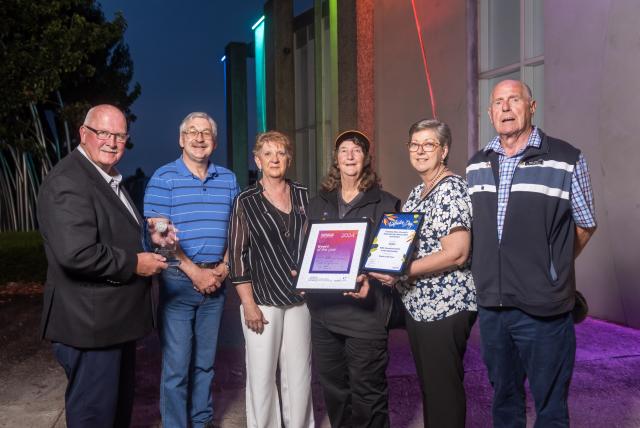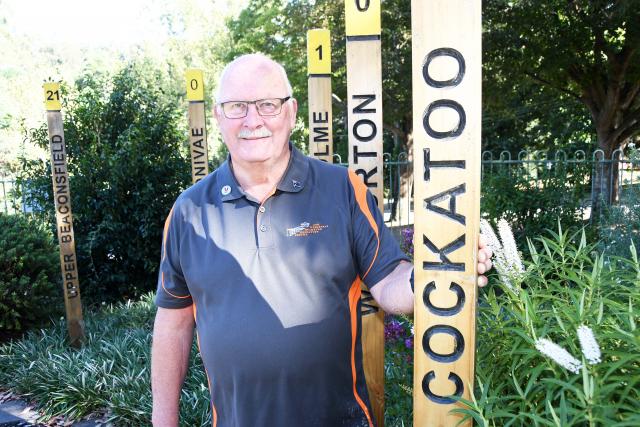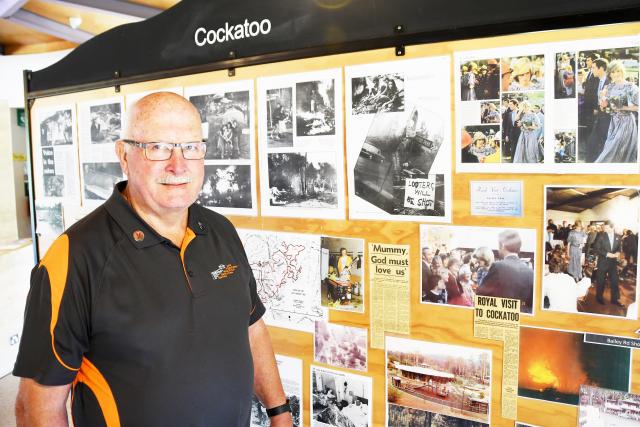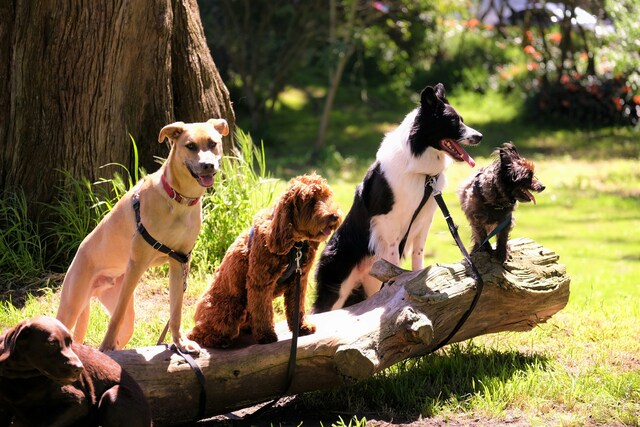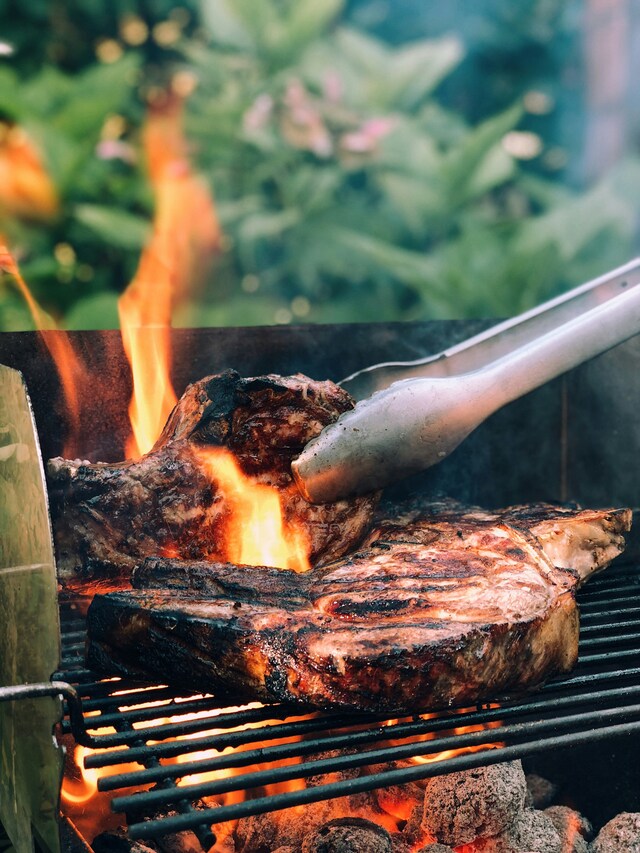The Ash Wednesday Bushfire Education Centre in Cockatoo is more than just a place archiving the past. The building lived through the fire 41 years ago as a shelter, standing today imbued with countless memories and as a testament to the community’s commitment to remember and learn from that fateful day. Star News journalist COREY EVERITT spoke with Chairman of the Ash Wednesday Bushfire Education Centre committee, Graham Simpson about the experience of Ash Wednesday, the centre and the importance for all to know the history.
The centre on McBride Road, Cockatoo wasn’t originally purposed for what it is now. It was made in 1977 as a kindergarten.
It’s a unique building, as a 12-sided Dodecagon with windows wrapping around in an almost 360 degree view out.
No one would expect that such a building would provide a perfectly frightening viewpoint for the more than 300 sheltering men, women and children to witness the relentless inferno that would engulf Cockatoo on the night of 16 February 1983.
Graham was not there that night, he was out fighting. He served as Captain of the Cockatoo Fire Brigade for 12 years.
On Ash Wednesday, he was only three months into the top job. In the centre, he walks over to the board documenting Cockatoo, pointing to a picture of himself at the time, noting his then full head of hair. He calls it, jokingly, his ‘baptism by fire’.
“I had got home from work, I could see the fires that had started on the day,” he said.
“I had a CFA radio in my car, so I could hear what was happening.
“I got around the roadblocks and I got home and there was nothing happening here.”
Many of the significant fires across Victoria and South Australia began through the day, Cockatoo was one of the last fires to start in the evening.
Cockatoo Fire Brigade’s major tanker was already deployed and sent to assist the fighting in Upper Beaconsfield by the time Graham was home where it was a short while later that a fire was reported in town.
“I called into the fire station, went home to see how the family was, did a bit of work around the house, sprinkler on the roof, that sort of stuff,” he said.
“We had a fire up here near Third Avenue, Bailey Road.
“We had the turn out, so I was down at the station, through a bit of gear in the back of the car, our little tanker went off.”
This job was a small fire, even though the brigades were down resources with only their small Ford F100 truck carrying a mere 600 litres of water, they put it out easily.
“We extinguished that, then I looked over into Wright Forest and there was this big plume of smoke coming out,” Graham said.
“I left the truck to finish with that little fire and went in there and had a little look and, yeah…it was raging.
“The radio was congested, something shocking, I called for more help and they had nothing to give me.
“Nothing we could do, with what equipment we had.”
Not only did they have little resources, but this started with a short time left before what would be known as the fateful wind change.
Ash Wednesday commemorates a day, but memories of it’s devastation were concentrated in mere moments as the strong northerly winds of the day were suddenly engulfed by gale from the South West, crashing through at well over 100kph.
This turned the fire into an all-consuming inferno that leveled towns in minutes, winds propelling it rapidly and fueling it to a temperature predicted to have been up to 2000 degrees celsius.
“We took a stand out on the road, at that stage the wind in Cockatoo, it was blowing from the north, but it wasn’t really bad and then the wind change came at about 9 o’clock,” Graham said.
“That’s what took it all down the hill through the forest, through the town.”
Seventy-five people died on Ash Wednesday, six of them in Cockatoo.
The kindergarten on McBride Street housed hundreds as a refuge. There was no power, it was crowded and hot with the only illumination being the wall of fire that looked to be quickly going their way.
“It was exactly the same as this, it had windows all around like this,” Graham said, surveying the view out to McBride Street and up to Bailey Road.
“The shop down the bottom of the hill caught fire.
“Then the old Cockatoo Hall was right across the road here where the cottages are, and then it caught fire so what are the people in here thinking.”
Once it was all settled, over 300 homes were destroyed in Cockatoo, over 1500 hectares of land were burnt.
Next was the recovery of what was left, Graham reflects on it with exhaustion.
“Months, months,” he said.
“People living in caravans, it was a real low point at that time.
“A lot of people moved out and just didn’t rebuild.”
Remarkably, the kindergarten was untouched. The map of the precise areas of destruction in town show Cockatoo with a broad, sweeping path of destruction over the entire town.
Yet, there is a small sliver of untouched land, that slices from the northern boundary of the fire’s path to leave a slight separation in the destruction. In the very bottom of it sits the kindergarten.
Cockatoo would rebuild, as Upper Beaconsfield and all the other towns did. With a small group of residents who remained after the fire which grew smaller and smaller by the years.
The kindergarten continued, it was the stopping point for the visit of Princess Diana and Prince Charles who planted a tree which still stands tall by the entrance today.
Decades later, when the fire was history for most, rather than memory. The kindergarten moved out of the building after ongoing problems emerged with unrepaired damage to the now old structure.
By this time Cockatoo had stablised, its vacancy seemed as if the town had finally moved on from the fire, it no longer needed the shelter it once provided.
“This became vacant, it got vandalised, the big windows got broken. The kids got in, graffitied the joint, smashed holes in the walls, all that sort of stuff,” Graham said.
“Then the council made a decision in April 2011 that they were going to demolish it.
“That’s when all of this started.”
Cockatoo didn’t forget and were outraged at the demolition, the building had emerged as a monument, its collective appointment forced by the council’s intention to destroy it.
The building was already at a severe level of degradation, it was an uphill battle to save it, so they took an all or nothing shot.
“The community rallied, got a lot of media and there was a one line email to Heritage Victoria that said this should be heritage listed,” Graham explained.
“Mind you this was built in 1977, not 1877, but Heritage Victoria stepped in and said stop the demolition.”
Heritage Victoria investigated and ruled against its listing, but they left one last lifeline with the right to appeal.
“After eight weeks they decided it should be heritage listed,” Graham said.
“That was because it was used as a refuge during the fire and the community was so into saving it.
“It’s heritage listed for reason of being significant to the State of Victoria and it’s the first building ever to be listed on the heritage register under that category.”
The building, its land lined by its fence and the tree planted by Princess Diana and the now King is rendered untouchable by the effort of the Cockatoo and wider community who remember its significance.
Next was figuring out what to do with it.The Cockatoo Memorial Committee, of which Graham was Chair, ran a survey of the community.
The top response was for the building to be restored as a place incorporating local history and Ash Wednesday, as well as a family-friendly gathering space.
With funding secured it was made into just that becoming the volunteer-run Ash Wednesday Bushfire Education Centre.
For the past decade the centre has been providing education on local history and Ash Wednesday to communities far and wide.
The committee involves many from beyond just Cockatoo, but many who were affected on the day or just wish to keep this important history and its lesson alive.
In 2023, the centre ran the 40 Anniversary commemoration service for Ash Wednesday. A large and successful event that served as a meeting point for all of CFA and the community to remember the tragic day.
The event won the committee an award from Cardinia Shire for Community Event of the Year in this year’s Australia Day Awards.
The centre opens on Sundays for free from 11am to 3pm, the main work of the committee is running talks from the centre.
Graham has given talks about Ash Wednesday to a variety of groups from Government agencies to schools. For many years natural disasters were part of the curriculum at local schools where Graham would be invited to speak.
Talks are still being run, with St Francis Xavier College soon making a visit to hear from Graham.
The committees want more and more to tell the story to people, particularly the next generation. Its importance has influenced many in Cockatoo and beyond and its memory should carry on to educate about bushfires, an ever present threat affecting people even now in Western Victoria.
It serves also to pass on the resilience of a community and the integral role it’s history plays.
To get in touch with the Ash Wednesday Bushfire Education Centre you can contact them at awbeccockatoo@gmail.com

